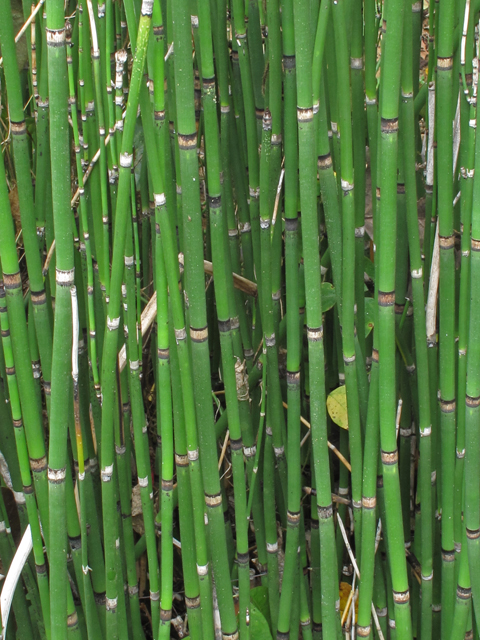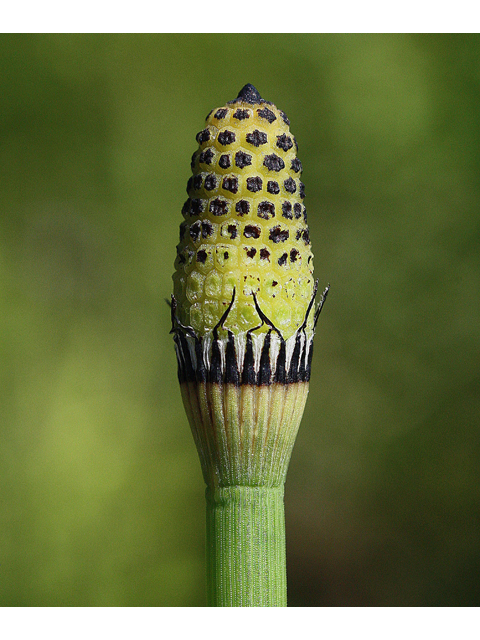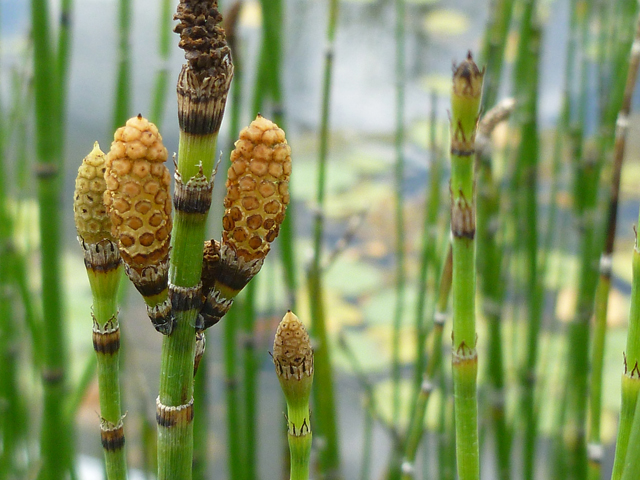Dig into Plants: Horsetail
| Horsetail Other Common Names: Scouring Rush, Scouring-rush Horsetail, Canuela Scientific Name: Equisetum hyemale Native to Alabama: Yes |
|
Lady Bird Johnson Wildflower Center Alan Cressler Click on image to enlarge it |
Learn more about...
| Ecological Benefits | ||||||
| Tall stems are great cover for various kinds of wildlife, including birds, reptiles, amphibians, and insects; dragonflies love perching on the stems |
| Leaf, Flower & Seed Identification | ||||
| LEAF DESCRIPTION |
Lady Bird Johnson Wildflower Center
Alan Cressler Click on image to enlarge it |
|||
| Leaf Characteristics Chart (PDF) | ||||
| Shape: Scale-like |
Margin: Dentate |
Arrangement: Whorled |
Form: Fused |
|
 |
 |
 |
||
| Description: | ||||
| Reed-like, dark green stems are cylindrical, about 1/3-inch in diameter, jointed, mostly hollow, usually branched, and have rough horizontal ridges; leaves are reduced to node-scales, joined together around the stem at each joint, forming a narrow, black, sheath-like band ending in a fringe of teeth | ||||
| FLOWER DESCRIPTION | |||
| Horsetail is not a flowering plant | |||
| SEED DESCRIPTION |
Lady Bird Johnson Wildflower Center
R. W. Smith Click on image to enlarge it |
||
| Type: Spore-bearing cone |
Description: No fruit or seeds; reproduces by spores in a pale yellow ovoid-shaped cone structure up to 1” long known as a strobilus which is located at the end of a fertile stem; sometimes older shoots will produces 1-4 cones around its stem rather than at the end; the cone has a short, narrow point at the tip; cones wither away after spore production ends |
Months in Seed: Spores are released from late spring to mid-summer |
|
| Plant spreads by: | |||
| Spores and Rhizomes/ Tubers/ Roots & Shoots Underground rhizomes spread and create new clumps of plants – spreads aggressively |
|||
ADDITIONAL RESOURCES FOR TEACHERS
| Quick Fact Sheet (Condensed Species Info) |
QR Code (Links to this Webpage) |
||
| Plant ID Sign (Text Only): Ready as-is PDF |
Plant ID Sign (Text Only): Editable Word Doc |
||
| Plant ID Sign (With Picture): Ready as-is PDF |
Plant ID Sign (With Picture): Editable Word Doc |
INFORMATION SOURCES FOR THIS PLANT
.
 |
 |
|
 |
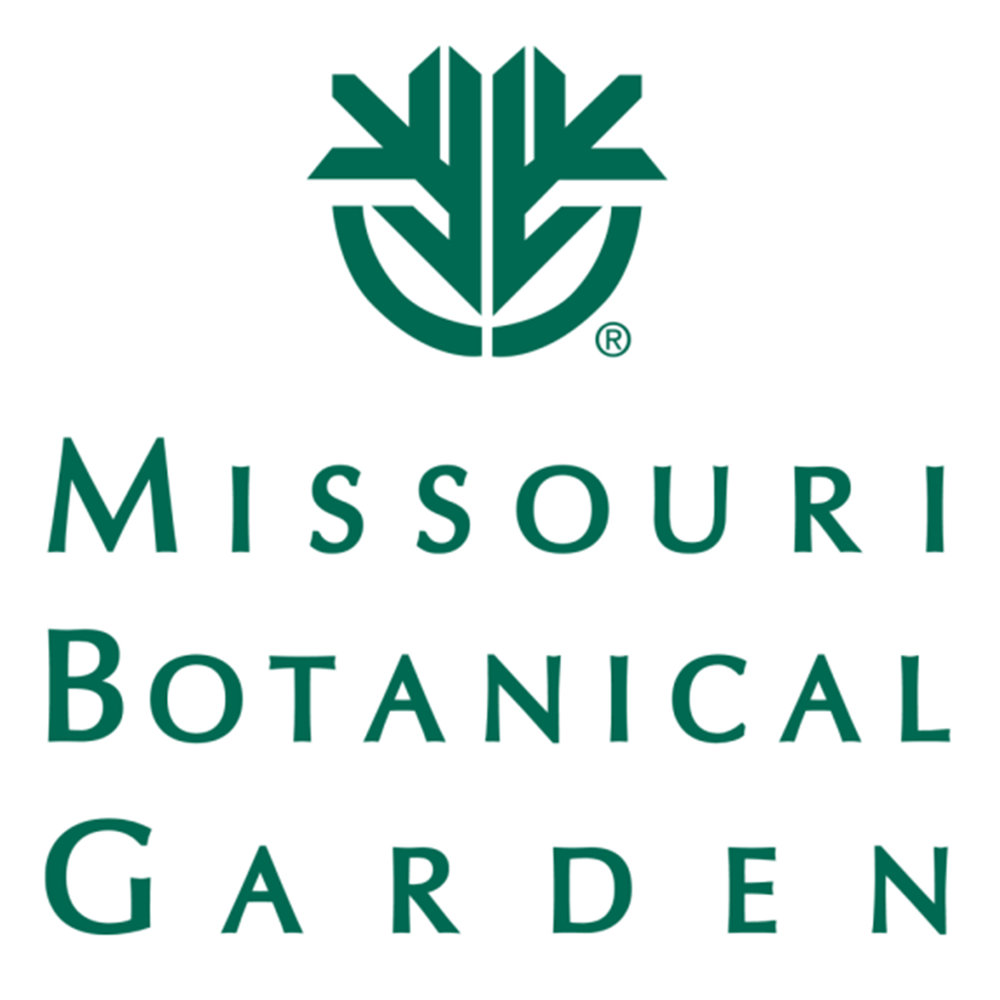 |
 Wildlife Tag
Wildlife Tag
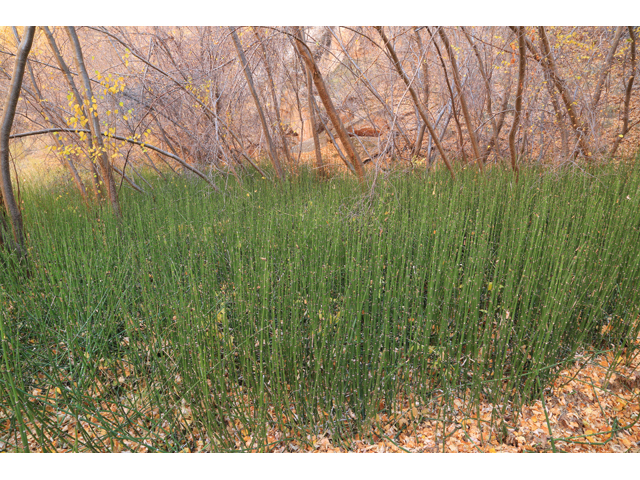






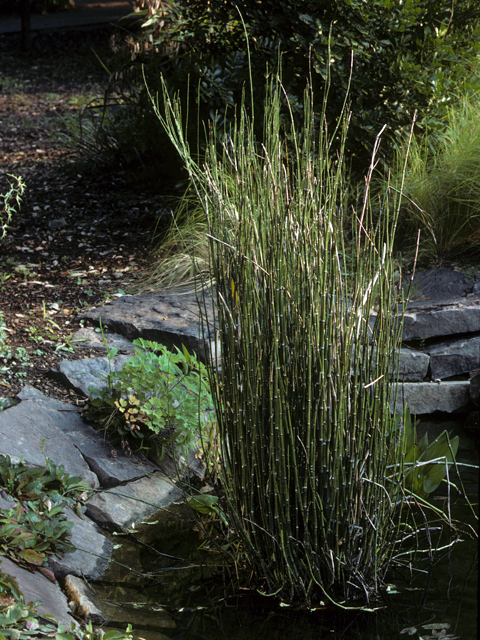


 Part Sun/ Shade
Part Sun/ Shade  Shade
Shade Prefers moist to wet soil at all times
Prefers moist to wet soil at all times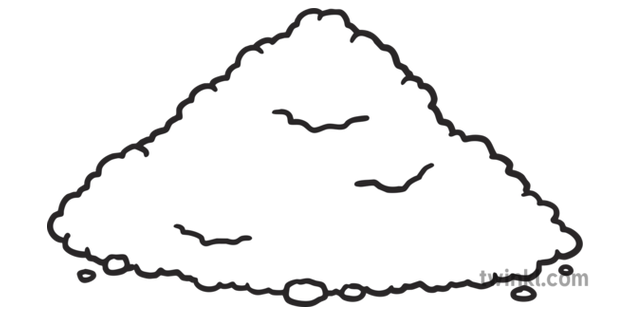 Sandy, Loamy, Clay, Limestone,
Sandy, Loamy, Clay, Limestone,